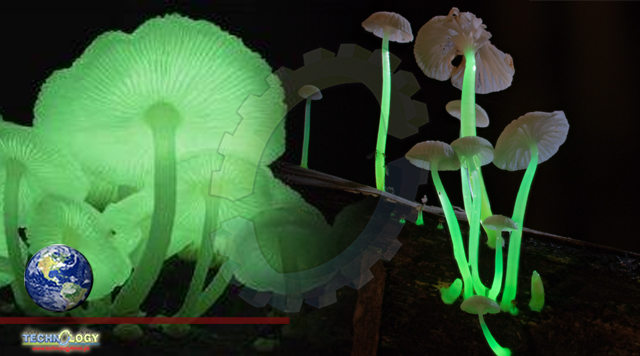The locals called these fungi species as “Glowing Mushrooms.” These mushrooms were first seen in August near a stream in Mawlynnong in East Khasi Hills district and later at the Krang Shuri waterfalls.

A new variety of mushrooms have been discovered in the forests of Northeast India. What makes it an interesting find is that the mushrooms are bioluminescent, or they can emit light.
The species is named Roridomyces hyllostachydis and was discovered during a mushroom documentation project in the North East. The project was undertaken in the months of monsoon in Assam by a team of scientists from India and China.
Let us understand more about these light emitting or bioluminescent mushrooms. ‘Mushroom Medley,’ Old Pic of Colourful Mushrooms by Photographer Jill Bliss Resurfaces Online! Check Out More Photos of the Vibrant Arrangements.
The locals called these fungi species as “Glowing Mushrooms”. These mushrooms were first seen in August near a stream in Mawlynnong in East Khasi Hills district and later at the Krang Shuri waterfalls.
Present in the bamboo forests in the West Jaintia Hills District in Meghalaya, this fungus emits its own light which is called bioluminescence. This new fungi is now among 97 species of bioluminescent mushrooms in the world.
They were found growing on dead bamboo, which requires more research. The team had Steve Axford, a fungi photographer who made a video of the growing and glowing of mushrooms here. Sea Waves Sparkles in Blue at Night: Scientists Explain How Dinoflage When ‘Squeezed Tight’ Cause Bioluminescent Light Waves on the Seashore.
What are bioluminescent fungi and why do they glow?
Bioluminescence is the property of a living organism to produce and emit light. “Animals, plants, fungi and bacteria show bioluminescence,” said Samantha Karunarathna, mycologist from the Kunming Institute of Botany, Chinese Academy of Sciences, who was part of the team that discovered the mushroom.
“Bioluminescent organisms are usually found in the ocean environments, but they are also found on terrestrial environments. The colour of the light emitted by the organism depends on their chemical properties.”
In the case of fungi, the luminescence comes from the enzyme, luciferase. “The [green] light emits when luciferans is catalysed by the enzyme luciferase, in the presence of oxygen.
During the chemical reaction, several unstable intermediate products are released as excess energy that makes them visible as light,” said Karunarathna, who is the lead author of the paper.
This finding is important as only a few species of flowing fungi are reported from India. There are two in Western Ghats and one in Eastern Ghats. There have been some spottings of glowing fungi in Maharashtra and Goa. The team believes there could be more but they have not been documented.
Originally published at Latestly